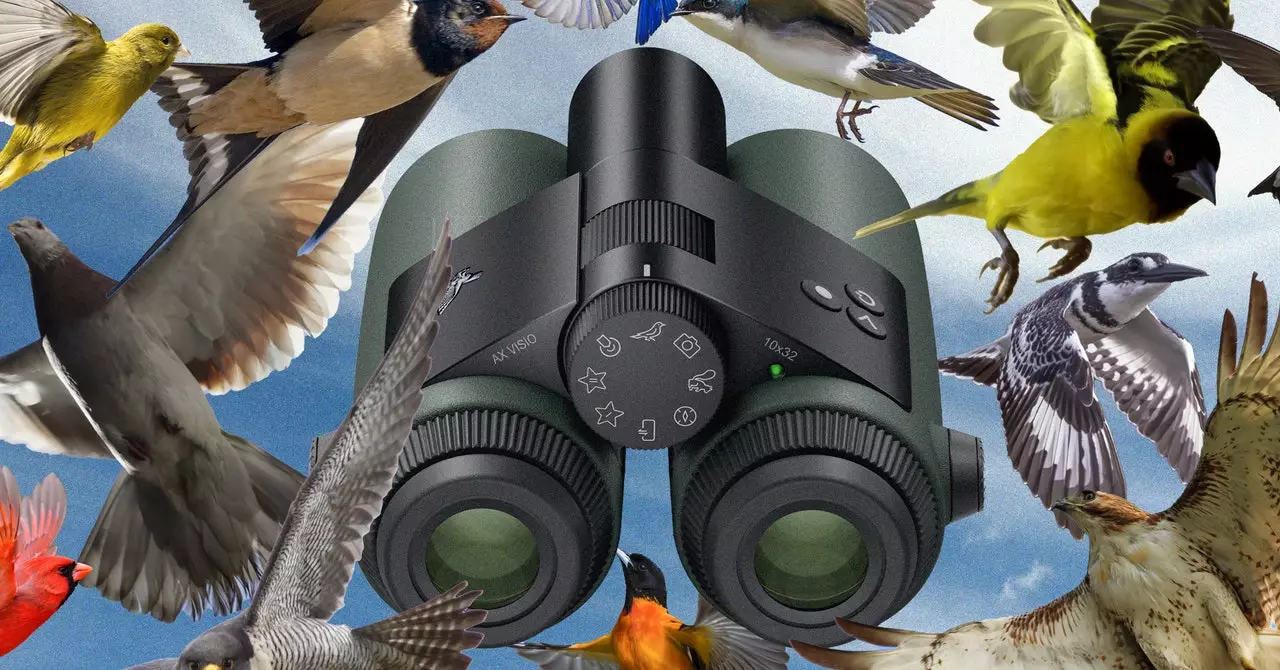In recent years, technology has pervaded every aspect of our lives, transforming even the most traditional pastimes. Birdwatching, once a leisurely activity enjoyed with merely a pair of binoculars, has now taken a high-tech turn with the advent of smart binoculars like the AX Visio from Swarovski. This innovative device combines cutting-edge technology with an extensive database of bird species, making bird identification simpler and more accessible than ever before. With the integration of the Cornell Lab of Ornithology’s Merlin Bird ID database, hobbyists and amateurs have the opportunity to identify birds in real time, no matter where they are in the world.
What makes the AX Visio stand out in a crowded field of outdoor gear is its ability to recognize not just birds, but also mammals, butterflies, and dragonflies. Utilizing the Sunbird database for mammal and insect identification, these binoculars represent a significant leap forward in integrating the natural world with technological advancements. However, it is worth noting that currently, the identification features for mammals and insects are limited to North America and Europe, while bird identification is globally applicable, extending even to remote areas like Antarctica.
This broad functionality is largely powered by a built-in GPS sensor, which enhances geolocation capabilities. By determining the user’s precise location, the device can narrow down species sightings significantly, providing more accurate identification tailored to the geographical context. This is particularly useful in rich biodiverse locations, like those found in South Africa, where I had the unique opportunity to test the AX Visio at andBeyond Phinda Private Game Reserve.
As an amateur birdwatcher, my experience with the AX Visio began with a mix of excitement and apprehension. The concept of using technology to aid in bird identification was novel, and I was initially daunted by the complexity that often accompanies advanced gadgets. However, I discovered that Swarovski had designed these binoculars with user-friendliness in mind. The mode-selection wheel, conveniently located on the bridge of the binoculars, allows users to cycle through different settings, including various identification modes and a dedicated photography mode.
During my field test, I was impressed by how intuitive the controls were. To identify a bird, the binoculars must be held steady and focused, ensuring a clear view of the target. Upon pointing the binoculars at a bird, a red circle appears, guiding the user to frame the creature correctly. If the bird fills the majority of the circle, identification is just a click away. My experience bore fruit when I successfully identified a malachite kingfisher—a small yet colorful bird—perched some 30 meters away.
However, the technology is not without its limitations. For instance, while attempting to identify a bee-eater located 100 meters away, the device was unable to provide a positive identification, highlighting the challenge of distance versus technological capability. In some instances, I observed that despite a bird being visible within the circle, an error message would appear stating that no identification could be made. Such inconsistencies can be frustrating and serve as a reminder that even high-tech solutions have their shortcomings.
One of the most commendable aspects of the AX Visio binoculars is their role in promoting conservation efforts. Users at the Phinda Private Game Reserve can rent these binoculars for a nominal fee of $40 per day, with the proceeds directly benefiting local conservation projects. This initiative underscores the importance of merging technological innovation with environmental stewardship.
The AX Visio binoculars represent a significant breakthrough in wildlife observation, blending advanced technology with a user-friendly interface. While the product does have limitations, the overall capability to identify birds and other species aids in enhancing the birdwatching experience and fostering a connection with nature. As technology continues to evolve, tools like the AX Visio pave the way for a brighter future in wildlife conservation and education.


Leave a Reply